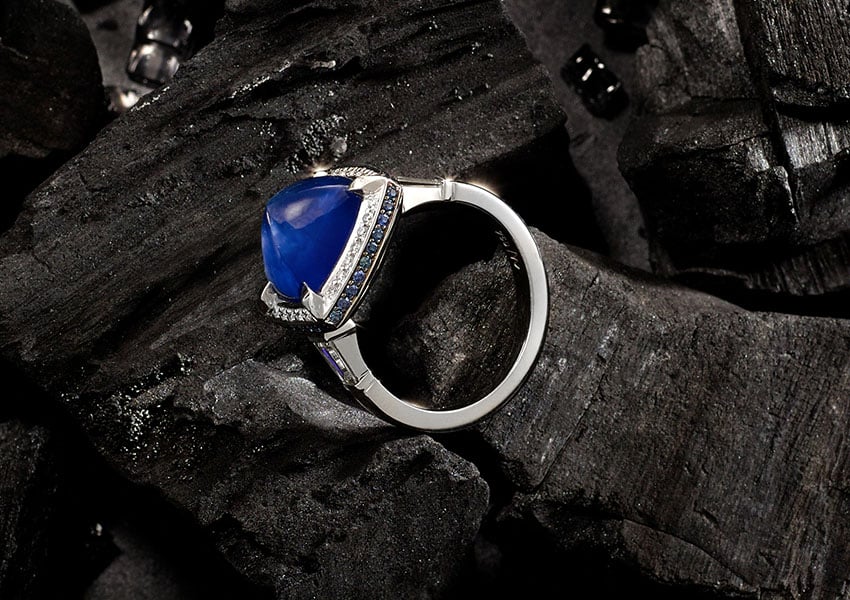Sweets usually need to be consumed with restraint, yet this is absolutely not the case with sugarloaf stones. This antique cut is resurging in popularity due to its amazing ability to absorb colour. We craft our pieces to maximise contrasting textures and colours, and the sugarloaf sapphire is no exception.
At first glance, the sugarloaf stone looks particularly similar to the classic cabochon. However, the emergence of this cut to have a 4-sided pyramid shape and high-domed unfaceted polish means that this variation on the classic round or oval cabochon allows for more depth and light to penetrate the stone.
The term ‘Sugarloaf’ is attributed to the tall, conically shaped loaves of refined sugar usually sold in this form until the late 19th century. This variation of cabochon uses one of the oldest stone cutting techniques, involving doming a gemstone and polishing, and contains one flat edge which is perfect for jewellery setting. It is most popular in displaying the raw colours of natural stones.
Our Sugarloaf sapphire ring is encompassed by a delicate halo of diamonds. The unusual cut centre stone contrasts from the clarity of the diamonds due to the multi-dimensional blue hues that transform at different depths and angles.
Sugarloaf cabochons are colourful and distinctive and are also a popular cut for opals and emeralds, though in my opinion, none surpass the popularity of sapphires. Sapphires are mesmerising when cut into sugarloaf cabochons. They are also the second hardest gemstones to diamonds and therefore less likely to scratch, ensuring the beauty of this smooth, glasslike polished surface.
Our sugarloaf stones may be worn individually as a statement piece or in multiples, as the sleek and bold nature of the cut always lends itself to be the centre of attention.
To learn more about our Sugarloaf Sapphire and Diamond Dress Ring, contact the boutique to arrange a complimentary consultation.











